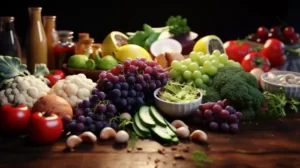If you’re considering diving into the world of cleanses, there’s a heap of information and options out there that may feel overwhelming. Cleanses have been praised for their ability to help people experience everything from increased energy and pain relief to improvements in skin conditions, immune system function, and taking care of that persistent belly bloat.
While your doctor may not provide an official prescription to “detox,” cleanses can offer a brief, rejuvenating break for your digestive system and detox organs. Before you jump in, some crucial “ground rules” can optimize your experience and help toward a healthier, safer cleanse. Always consult your doctor prior to starting a cleanse, especially if you have any pre-existing medical issues such as diabetes.
Fiber is Your Friend
During a cleanse, your digestive system will be front and center as toxins are flushed from your body. Consuming enough fiber plays an essential role in this process. Incorporating legumes, whole grains, and plenty of fresh fruits and vegetables can help you get the necessary amounts of both soluble and insoluble fiber to maintain bowel regularity and ensure the toxins are removed efficiently.
Stay Hydrated
When toxins are on their way out of your body, they need an exit strategy—enter water! Staying well-hydrated is crucial during a cleanse, as water helps escort those toxins right out of your system. Drinking at least 8 glasses of water per day (and even more if you’re physically active or in a warm climate) is recommended.
Ask for Alkaline
During a cleanse, your body will enter an alkaline state to optimize detoxification. Consuming alkaline-forming foods such as green leafy vegetables, cucumber, almonds, and seeds can help support this essential balance.
Bring on the Bitter
Your liver plays a key role in removing toxins from your body, and bitter greens can help improve its function during your cleanse. Consider adding kale, dandelion greens, mustard greens, or arugula into your daily diet to support your liver’s detox efforts.
Consider Cruciferous
Packed with vital nutrients and detoxifying compounds, cruciferous vegetables (including broccoli, cauliflower, cabbage, kale, and Brussels sprouts) are a fantastic addition to your cleanse. They contain glucosinolates, which help flush carcinogens and other toxins from your body, while also providing powerful anti-inflammatory and antioxidant effects.
Spare the Strain
During a cleanse, it’s wise to be gentle with your body. This is not the time for rigorous exercise routines or pushing yourself to the limit. That being said, light to moderate activity like walking, yoga, or stretching can still be very beneficial. Listen to your body and give it the rest it needs to make the most of your cleanse experience.
Lean into Lean Protein
For many, a cleanse may conjure images of juice fasts or avoiding “real” foods altogether. While these approaches can be effective in some circumstances, it’s essential to maintain balanced nutrition by incorporating quality, lean protein sources like chicken, fish, or plant-based options such as lentils, beans, or protein-rich grains like quinoa.
The Timing Matters
It’s important to gradually introduce clean, healthy foods back into your diet after completing a cleanse. This eases your digestive system back into “normal” operations and avoids undoing all your hard work. Refrain from diving straight back into heavy, greasy meals or consuming large quantities of sugar and alcohol directly after your cleanse. Enjoy the benefits of your efforts and practice mindfulness surrounding food choices as you transition back.
In conclusion, understanding these eight cleanse rules and guidelines will help ensure your experience is not only safe and effective but also a transformative way to rejuvenate your body and support your overall health and wellbeing.
![8 Simple Rules to Refresh Your Body with a Healthy Cleanse [See Pictures]](https://naturalhealthreserve.com/wp-content/uploads/2024/01/8-rules-healthy-cleanse-slideshow.webp)


